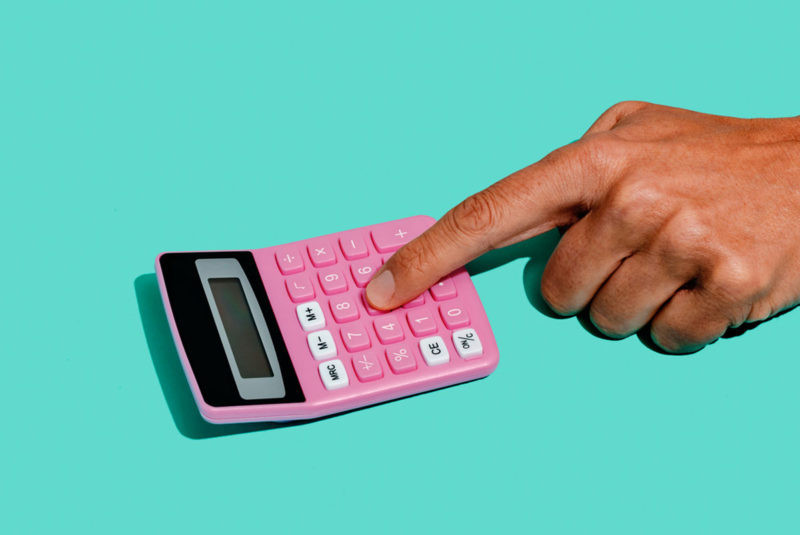You may have never heard of the Fair Isaac Corporation, but it’s heard of you. And it influences much of your life, from your mortgage’s interest rate to your ability to qualify for great credit cards.
That’s because Fair Isaac invented the FICO® Score, a number used by lenders to evaluate your creditworthiness. Since the late ‘80s/early ’90s, this credit score has affected the financial lives of countless people across the United States. And you don’t have just one score, either; you have hundreds, including multiple FICO® Scores.
Since they probably won’t go away any time soon, you should understand your FICO® Scores in and out. And it would be helpful to have a basic understanding of other scoring models, particularly VantageScore® – a credit score which is becoming more popular among lenders with each passing year.
Free FICO® Credit Scores
If you’re looking for a FICO® score from a specific credit report, you might already have access to it through an existing credit card account or other online service. Translation: You may not have to pay for it.
Credit Card Issuers That Provide Free FICO® Credit Scores
| Issuer | Credit Score | Credit Bureau | Who Can Get It |
| American Express | FICO® Score 8 | Experian™ | Consumer cardholders |
| Bank of America | FICO® Score 8 | TransUnion® | Consumer cardholders |
| Barclays | FICO® Score 8 | TransUnion® | Consumer cardholders |
| Citi | FICO® Bankcard Score 8 | Equifax® | Consumer cardholders (select cards) |
| Discover* | FICO® Score 8 | TransUnion® for cardholders; Experian™ otherwise | Anyone |
| HSBC | FICO® Score (unknown version) | Equifax® | Consumer cardholders, Select Credit customers |
| Merrick Bank | FICO® Bankcard Score 8 | TransUnion® and/or Experian™ | Consumer cardholders |
| Navy Federal Credit Union | FICO® Score 9 | Equifax® | Consumer cardholders |
| PenFed | FICO® NextGen Score | Equifax® | Consumer cardholders, other account holders |
| Synchrony | FICO® Score 8 | TransUnion® | Consumer cardholders |
| SunTrust | FICO® Bankcard Score 8 | Equifax® | Consumer cardholders |
| USAA | FICO® Score 8 | Experian™ | Members |
| Wells Fargo | FICO® Score 9 | Experian™ | Eligible consumer account holders |
*Discover is a special case because its free credit score service is available to anyone, cardholder or not.
There are also many credit cards issued by credit unions, and some of them provide free credit scores. And your bank may offer some type of free credit score for account holders as well.
Free VantageScore® Credit Scores
The following services are freely available to anyone, just for signing up (with the exception of U.S. Bank’s service, which is only available for cardholders).
Credit Card Issuers and Companies That Provide Free VantageScore® Credit Scores
| Issuer/Company | Service | Credit Score | Credit Bureau | Who Can Get It |
| American Express | MyCredit Guide | VantageScore® 3.0 | TransUnion® | Anyone |
| Bankrate | myBankrate | VantageScore® 3.0 | TransUnion® | Anyone |
| Capital One | CreditWise | VantageScore® 3.0 | TransUnion® | Anyone |
| Chase | Credit Journey | VantageScore® 3.0 | TransUnion® | Anyone |
| Credit.com | Credit.com | VantageScore® 3.0 | Experian™ | Anyone |
| Credit Karma | Credit Karma | VantageScore® 3.0 | TransUnion® and Equifax® | Anyone |
| Mint | Mint | VantageScore® 3.0 | TransUnion® | Anyone |
| U.S. Bank | Login here | VantageScore® 3.0 | TransUnion® | Consumer cardholders |
Free Credit Score Check Services
When you visit MoneyTips, we want you to know that you can trust what’s in front of you. We are an authoritative source of accurate and relevant financial guidance. When MoneyTips content contains a link to partner or sponsor affiliated content, we’ll clearly indicate where that happens. Any opinions, analyses, reviews or recommendations expressed in our content are of the author alone, and have not been reviewed, approved or otherwise endorsed by the advertiser.
We make every effort to provide up-to-date information; however, we do not guarantee the accuracy of the information presented. Consumers should verify terms and conditions with the institution providing the products. Some articles may contain sponsored content, content about affiliated entities or content about clients in the network. While reasonable efforts are made to maintain accurate information, the information is presented without warranty.
You have a variety of options when it comes to providers of free credit scores.
If you want to get free FICO® Scores, your best bet is to get them through credit card issuers. Several of the major card issuers — Amex, Bank of America, Citi, etc., — offer free FICO® Scores to cardholders as a benefit.
Getting free VantageScore® credit scores is easier, because you don’t need to have any particular credit cards to access them. Instead, there are quite a few companies (including some card issuers) that offer free VantageScores® to anyone just for signing up.
Take note that these services update your scores at different intervals. The best services update more frequently, like once per week or once per month. Some only update once every three months.
Also keep in mind that most of these free services will only give you access to one or two of your credit scores for free. So, if you want to keep an eye on your scores from Equifax®, TransUnion®, and Experian™, you may need to stack multiple free services together or consider paying for a 3-bureau credit monitoring service.
About FICO® Credit Scores
The first place you should look is your credit card company.
According to FICO®, over 170 financial institutions participate in a program known as “FICO® Score Open Access.” The Open Access program lets lenders give their customers free access to FICO® Scores already purchased for monthly account risk reviews (like credit cards). In many cases, this will be the same score used to manage your account, but it may or may not be the same score used by the lender for credit application decisions.
You can access your FICO® Scores through the card issuers above after logging in to your online account. Free FICO® Scores are typically only available to users of regular consumer credit cards, and not available for business card users.
About VantageScore® Credit Scores
VantageScore® is the second most popular credit scoring model in the United States.
The three major credit bureaus pooled their resources to create this new score in 2006. And though more and more lenders are using this newer type of score, it’s still not as popular as FICO®. (FICO® Scores are currently used by 90% of top lenders in lending decisions.) However, VantageScores® have been gaining in popularity.
Since free VantageScores® are easier to get than free FICO® Scores, you may want to use your VantageScores® as a proxy for keeping track of your FICO® Scores (if you can’t get access to free FICO® Scores, that is).
In most cases, you can assume that a good VantageScore® equates to a good FICO® Score. VantageScores® are also directionally similar to FICO® Scores. For instance, if your VantageScores® are going up, your FICO® Scores probably are too; and if your VantageScores® are going down, it’s likely that your FICO® Scores are as well.
How Do I Access My Credit Score for Free?
You can use a combination of the services above to see your credit scores for each one of your three credit reports – Equifax®, TransUnion®, and Experian™. We’ll discuss a few popular services here in more detail.
Discover
The Discover Credit Scorecard is an excellent way to check up on your credit, providing a FICO® Score 8.
It’s unique compared to the other services on this page because it’s available to Discover cardholders and non-cardholders alike. And oddly enough, it will use TransUnion® credit reports for cardholders and Experian reports for non-cardholders.
So, the source of your Discover credit score will depend on how you signed up for the service: either through your cardholder login or otherwise.
Yes, you can access each aspect of this service simultaneously to get free FICO® Scores from both TransUnion® and Experian™.
If you’re a cardholder, you can log in to your online account as you normally would to see your TransUnion® credit score. Then, you can create a new Discover account, which is not associated with your credit card, to see your Experian™ credit score.
Or, if you’re not a cardholder, you can simply create a Discover account to access the service and see your FICO® Score from Experian™. This is free, and it doesn’t require applying for any credit cards, bank accounts, or other financial products.
Chase
You can get a free Chase VantageScore®:
- Sign up for the Credit Journey service to access VantageScore® 3.0 scores, based on TransUnion® credit reports.
So, anyone can use Credit Journey to see a VantageScore®.
Wells Fargo
The Wells Fargo FICO® Score program stands out, because unlike the other services on this page it provides the scoring for version: FICO® Score 9.
FICO® Score 9 has some differences compared to FICO® Score 8, which is still the most popular version with lenders. The three main differences with FICO® Score 9 are:
- Medical bills sent to collections are weighed less heavily
- Collection accounts that have been paid in full are now disregarded
- Rental payment history is now factored into scores (if the landlord reports payments to the credit reporting agencies)
Wells Fargo states the following about eligibility to access this score: “You must be the primary account holder of an eligible Wells Fargo consumer account with a FICO® Score available, and enrolled in Wells Fargo online banking. Eligible Wells Fargo consumer accounts include deposit, loan, and credit accounts. Other consumer accounts may also be eligible. Contact Wells Fargo for details.”
Credit Karma
Besides the card issuers above, Credit Karma is our favorite source for free VantageScores®. Why? Because your Credit Karma.com free credit scores come from both TransUnion® and Equifax®, giving you a single handy dashboard to access both of these scores.
Take a look at your TransUnion® free credit score compared to your Equifax® credit score: Do they match, or are they close? If not, it indicates that there are some differences in the contents of those two credit reports.
This isn’t necessarily a bad thing, and it’s normal to have some differences — some lenders only report to one or two of the credit bureaus, and not all three. So you shouldn’t expect to see the same data on all of your reports.
However, it’s possible that differences in your credit reports could indicate fraud or errors of some kind, which is why it’s important to monitor all three of your credit reports periodically. If you find any erroneous or fraudulent information, you should correct it as soon as possible.
Experian™
Experian™, one of the nation’s premier consumer credit bureaus, allows you to view your FICO® Score 8, based (unsurprisingly) on your Experian™ credit report.
Simply sign up for CreditWorks Basic — Experian™’s free, low-tier membership — verify your identity, and then submit your order.
You’ll get instant access to your FICO® Score 8, plus basic credit report information including, but not limited to, the number of open credit accounts in your name, your average account age, and your overall credit usage.
What’s a Credit Score?
A credit score is a number (usually between 300 and 850) that helps lenders evaluate how likely you are to pay back a loan. Though the exact formula is a secret, it’s based on your credit history and current credit information (like how many cards you have open and whether or not they’re maxed out).
The national average FICO® Score is 704, which falls in the range of “good” credit scores.
Sixty-six percent of Americans have at least “good” FICO® Scores, according to Experian™.
When you have good or excellent credit, it means you’re a low credit risk — and lenders are eager to lend you money at low rates. When you have poor or fair credit, it means you’re a high risk — and may have difficulty getting credit, or may only be able to obtain it at high interest rates.
Though you’ll often hear talk about your “credit score” in the singular, you don’t have just one.
In the United States, there are three major credit bureaus: TransUnion®, Equifax® and Experian™. Each has its own credit file on you, and they could have different information in them.
There are many different algorithms that could be used to calculate your credit scores. As a result, your scores might vary depending on which credit reporting agency and type of score your lender uses.
For example, American Express cardholders get a free FICO® Score 8, which is a score that ranges from 300 to 850, based on Experian™ credit report data. On the other hand, Citi cardholders get access to a FICO® Bankcard Score 8, which ranges from 250 – 900, based on Equifax® credit report data. Even though they’re both FICO® Scores, they have different score ranges, and the two scores are based on data from two different sources.
Why Do Credit Scores Matter?
As mentioned above, your credit history affects many parts of your life, like the rates on your mortgage and auto loan and whether you’re approved for an apartment or job.
Since credit and credit scores touch all lending and credit decisions, you can’t stick your head in the sand and pretend they don’t matter. (Your mom’s meatloaf is fantastic and all, but you really don’t want to live in her basement forever, do you?)
Checking your credit scores will help you figure out where you can improve. It can also help you notice mistakes or signs of identity theft.
However, don’t forget to check the sources of your credit scores (aka the information your credit scores are based on) — your three credit reports. There are several ways to get free credit reports, including AnnualCreditReport.com — the government-mandated site where you can access your three credit reports for free once every 12 months.
Though these free reports won’t include credit scores, they will list information about every account you have with creditors so you can monitor them for accuracy. When you review your three reports, if you find anything incorrect you can dispute it with the credit bureau.
What’s a FICO® Score?
The most well-known type of credit score is the aforementioned FICO® Score, which is used by most financial institutions to make major lending decisions.
Despite what you might think, you don’t have just one FICO® Score either. Since each of the three credit reporting agencies has its own information about you, a separate FICO® Score is calculated for each one.
Not to mention there are different types of FICO® Scores. Some are used for credit cards, while others are used for car loans or mortgages. And like any good piece of technology, the formulas are updated frequently — with versions including FICO® Score 8, FICO® Score 9, FICO® Score 10, and so on — yet another reason scores vary so much.
What Are Alternative Credit Scoring Systems?
FICO® provides the most popular scoring models being used today, and we’ve already talked about VantageScores® above. But there are a number of other credit scoring systems as well, with some being specific to certain credit reporting agencies.
These alternative credit scores are either less popular with lenders in general or used for niche purposes.
- Equifax® credit score: Equifax created its own proprietary scoring model, which you can access for $15.95 for a 30-day period.
- TransUnion® CreditVision Link: CreditVision Link is TransUnion®’s proprietary credit scoring system, and it combines traditional score factors with alternative data, like deposit account history, short term lending, and address stability, to provide scores for more people.
- PRBC alternative credit score: The PRBC Credit Score, with a range of 100 – 850, takes into account rent payments, internet and phone bills, utility payments, insurance, and rent-to-own properties, in addition to traditional credit factors.
- LexisNexis RiskView score: The RiskView score draws on traditional and alternative data sources to provide scores for consumers who typically couldn’t be scored, including information like residential stability, asset ownership, derogatory status, and life-stage analysis.
- LexisNexis Payment score: The Payment score ranges from 501 to 900 and is designed for collection agencies. It helps predict how likely a person is to pay off their collection accounts so agencies can better focus their efforts.
- LexisNexis Order score: The Order score helps businesses verify online shoppers, detecting high-risk transactions and preventing fraud with tools like identity and address verification.
- LexisNexis PowerView score: The PowerView score is used by auto lenders, and incorporates alternative data along with traditional credit scoring factors.
- SageStream Credit score: SageStream is a credit reporting agency, albeit a far less popular one compared to Equifax®, TransUnion®, and Experian™. The SageStream score ranges from 001 – 999. It’s used by different types of companies, from auto lenders to retailers and from credit card issuers to mobile phone providers.
How Can I Improve My Credit Score?
Unhappy with your credit scores? Here are a few ways you can improve them:
- Make all your payments on time: Payment history is super important to your credit scores. If you have trouble remembering your due dates, try setting up automatic payments or create calendar reminders.
- Pay off debt: One of the key factors in your credit scores is how much of your available credit you’re using on credit card accounts. This is called your credit utilization ratio, and the lower it is, the better.
- Keep old cards open: Though it might seem counterintuitive, you usually don’t want to close out a credit card once you pay it off. Closing a credit card account, especially one with a $0 balance, could raise your credit utilization ratio — not a good move for your scores.
- Check your scores regularly: If you’ve learned one thing from this post, we hope it’s to check your credit scores and reports often, especially before you apply for new credit. In fact, it’s not overkill to check your credit on a monthly basis. Try a credit monitoring service. Not only will you catch errors, you’ll also be able to spot signs of identity theft right away if it happens to you.
The Short Version
- You can check your credit scores — FICO® and VantageScore® — from all of your credit reports, quickly, easily, and for free
- If you want to get free FICO® Scores, your best bet is to get them through credit card issuers
- There are many different algorithms that could be used to calculate your credit scores. Your scores may vary depending on which credit reporting agency and type of score your lender uses




